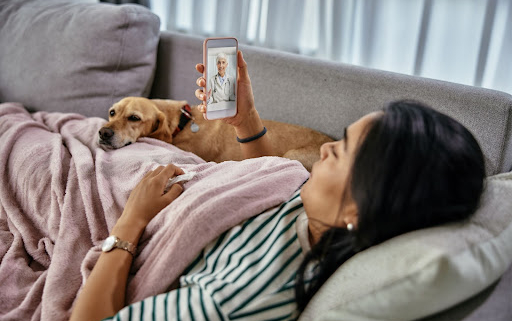Virtual or telehealth appointments spiked in popularity during the Covid-19 pandemic. Even as restrictions for in-person medical care were lifted, online video consultations have remained popular for many Florida residents.
Although the convenience of telemedicine can’t be denied, you should proceed with caution when seeking virtual medical care. Virtual appointments limit the type (and accuracy) of medical assessments that can be performed, which may lead to misdiagnoses.
If you believe you were wrongfully diagnosed in a telehealth appointment, don’t hesitate to contact the skilled medical malpractice lawyers with Lytal, Reiter, Smith, Ivey & Fronrath.
Advantages of telehealth
Telemedical appointments facilitate easier access to medical care and can be very convenient for busy people, those who are too sick to get out of bed, those with minor ailments, and those who are unable to get a timely appointment with their doctor.
Immediate access to medical care without leaving home helps many overcome barriers to treatment, like lack of transportation or inadequate facilities or options in a patient’s area.
Risks and limitations with telehealth that might lead to misdiagnosis
Inability to perform key evaluations
Patients self-report symptoms, but since the vast majority don’t have a medical background, they may not be able to accurately identify certain symptoms. There are several basic yet key evaluations that are performed at in-person appointments, all of which could be vital to a proper diagnosis.
Some of these include:
- Blood pressure checks
- Listening to the patient’s lungs
- Checking the patient’s temperature
- Monitoring the patient’s oxygen saturation levels
Some instances of telehealth misdiagnosis might have been caused by the prescription of medications or recommended treatment that wouldn’t have otherwise been made if a proper in-person evaluation could have been completed.
Inadequate telehealth technology and lack of training for providers
Sometimes, a misdiagnosis could occur because a telemedical provider didn’t hear what they thought they heard. Miscommunication between doctor and patient could be due to inadequate technology, lags in the video, or audio that cuts out. The patient isn’t a medical expert, so they might not know everything they should relay.
Clinicians may also have an over-reliance on the medical codes that can indicate a certain condition. When a doctor enters certain symptoms into a program and the software produces possible diagnoses based on the codes entered, there could be a risk that the doctor doesn’t explore further to confirm the computer’s assessment.
Incomplete medical records and communication between providers
With less opportunity to properly examine a patient, doctors conducting telehealth exams rely more on the patient’s electronic health records, including lab findings, to make a diagnosis.
However, many telemedicine providers are separate from a patient’s normal medical group, so the telehealth doctor might not have access to the patient’s past medical history other than what was self-reported. The lack of health records deprives a doctor of vital information needed to consider certain conditions.
Examples of misdiagnosis in telehealth
Some diseases are more likely to be misdiagnosed than others due to the limitations of telehealth. If you fear you may have one of these conditions, especially if it was ignored or has worsened after a telehealth appointment, then you may wish to seek an in-person opinion.
Skin conditions
Dermatological conditions require a close look at the patient’s skin, including areas that the patient themselves can’t see. Even having a visual on the screen or photos of the affected areas doesn’t replace the close-up examination of the skin’s texture or the edges of a troublesome mole that might be an indication of skin cancer.
Respiratory infections
Hearing the patient’s lungs is critical for the early and proper diagnosis of a respiratory concern. Fluid in the lungs can’t be detected through a video call, and many patients may not realize how serious their condition is because they can’t hear their lungs, or they might have gotten used to their breathing difficulties.

Mental health conditions
Although many mental health diagnoses rely on self-reporting, seeing a patient in person can help a doctor pick up on unspoken cues indicating heightened anxiety or depression.
Psychiatrists or therapists who see patients regularly may be familiar with their patient’s normal behavior patterns, and if something is different, then the therapist can explore further and make a more accurate assessment.
Strategies to reduce misdiagnosis in telehealth
If the virtual medical care provider feels that they weren’t able to perform a full and complete evaluation or that they might have missed something important due to the limitations of telehealth, they should advise the patient to seek prompt in-person care.
Some other critical strategies for improving the quality of telemedicine and reducing the likelihood of misdiagnosis include:
- Referring patients to in-person exams more often
- Improving telehealth technology and connectivity
- Improving clinical training for telemedical providers
- Facilitating better communication and sharing of medical records between healthcare providers
Do you suspect you were misdiagnosed by a telehealth provider?
You may have been misdiagnosed if your condition hasn’t improved or if it has worsened, despite a medical diagnosis and prescribed care. Medical misdiagnosis can be serious, and you might be eligible for compensatory damages for your additional medical bills and pain and suffering.
Contact Lytal, Reiter, Smith, Ivey & Fronrath today at (561) 655-1990 for a free consultation about your telehealth misdiagnosis with a Florida medical malpractice lawyer.






